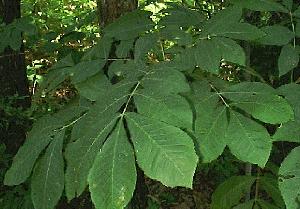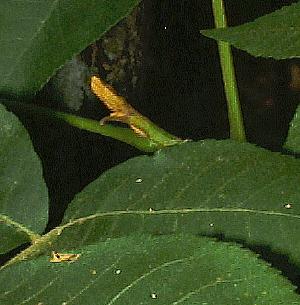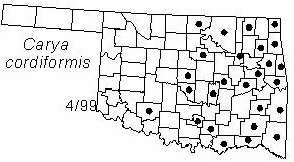

Description: Tree to 20 m (65 ft) tall and 30 cm (12 in) diameter, with broad rounded crown. Bark hard, light gray-brown, becoming shallowly furrowed into narrow forking ridges on older trunks and branches. Twigs slender, glabrous, reddish brown. The single terminal bud is bright yellow, narrow and flattened, with paired scales not overlapping. Leaves alternate, pinnately compound, 15-20 cm (6-8 in) long, with a hairy rachis. Leaflets usually 7-9, lanceolate, 5-15 cm (2-6 in) long, acuminate, finely serrate, glabrous yellow-green above, paler and slightly hairy below. Flowers catkins appearing in the early spring. Fruits usually nearly round, 2-3 cm (0.8-1.2 in) long, thin husk splitting along four raised ridges.
Distribution: The species is native to much of the eastern United States.
Habitat: well-drained floodplains and moist upland forests.
NWI status: FAC
Comment: The nuts of all the hickories are important food for wildlife, especially squirrels. The seeds of bitternut are bitter and are not eaten by people. Carya is the ancient Greek name for walnut; cordiformis refers to some heartshaped structure, but its application is not clear.
Distribution in Oklahoma: 
BACK
NEXT
RETURN TO INDEX
Last update: 9/8/99
 Go to Oklahoma Biological Survey Home Page
Go to Oklahoma Biological Survey Home Page
 Disclaimer
Disclaimer